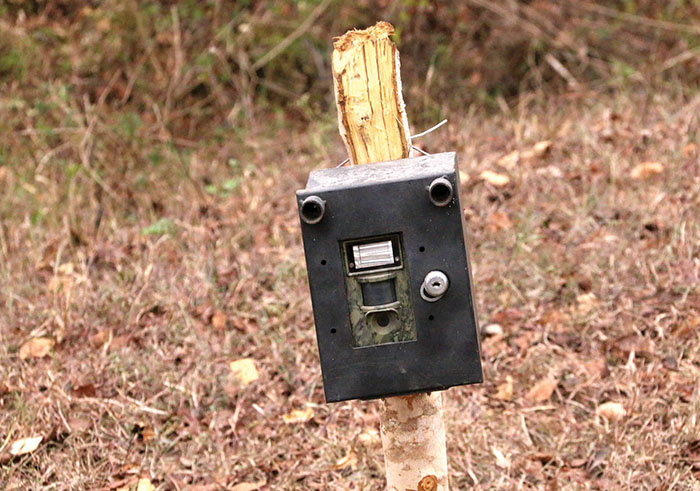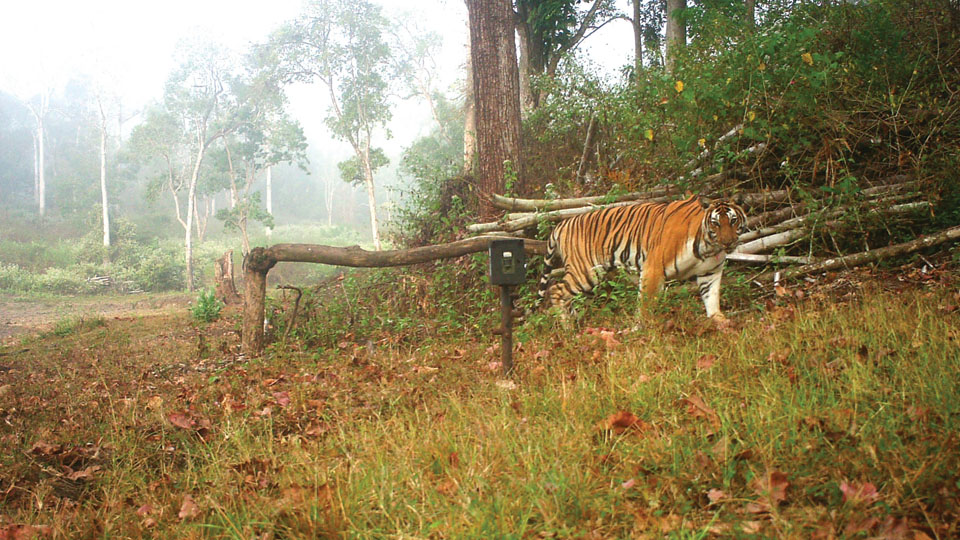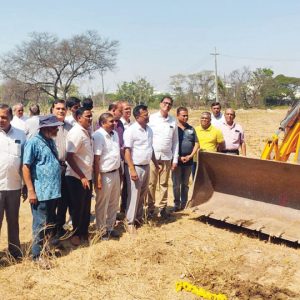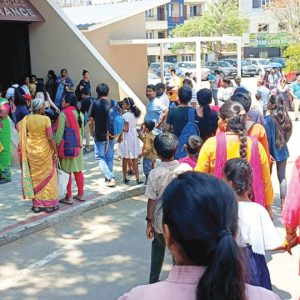Camera traps used in 612 points in 1,036 sq.km area; survey of 305 points completed
By M.T. Yogesh Kumar
The Forest Department has completed the initial phase of the internal wildlife census, utilising camera traps at 305 designated locations within the Bandipur Tiger Reserve. Although the National Tiger Census occurs every four years, camera trap surveys are conducted annually across all Tiger Reserves.
The census plays a critical role in the conservation of wildlife by providing valuable insights into population sizes, distribution patterns and trends over time. This information is essential for identifying areas where conservation efforts are most needed and for developing effective strategies to protect endangered species and their habitats.
All major animals included
This comprehensive survey encompasses not only tigers but also other wildlife species such as elephants, leopards, bison, sambar deer and various carnivores and herbivores. The primary objective is to ascertain an accurate count and gather photographic evidence of the wildlife population within the forest reserve.
According to officers, wildlife census data is indispensable for the management of protected areas and wildlife reserves. “By accurately assessing the status of various wildlife populations, we can make informed decisions regarding habitat restoration, predator-prey dynamics and the control of invasive species. This ensures that this natural habitat is maintained in a healthy state, supporting the biodiversity it harbours,” said Dr. P. Ramesh Kumar, Director of Project Tiger at Bandipur.
As the oldest Tiger Reserve in the State, Bandipur spans across 1,036 square kilometres, with each two-square-kilometre area demarcated as a grid for camera trap installations to monitor wildlife activity.

Two-phased data collection
The ongoing survey is divided into two phases, with Bandipur Tiger Reserve segmented into 13 zones and 3 sub-divisions for efficient implementation. A total of 612 survey points have been identified, requiring 1,224 camera traps (two per point). Despite possessing 800 camera traps, the Reserve conducts the internal census in two phases due to resource constraints.
Forest officials have confirmed the successful conclusion of the first phase of the internal census, during which camera traps diligently monitored various wild animals around the clock for 25 days. The collected photographs of wildlife, including tigers, will now be compiled into a comprehensive database aimed at aiding wildlife conservation efforts.
With the initial phase completed, officials and staff are actively engaged in installing camera traps at the remaining 305 designated points for the second phase of the survey. The culmination of this subsequent phase, anticipated within the next 25 days, will yield the final tally of wild animals present within the Bandipur Tiger Reserve.
Workshop for forest personnel
The Forest Department has scheduled a workshop on Feb. 23 to prepare for the transect survey in the Bandipur Tiger Reserve. During this survey, forest personnel will extensively explore the forest on foot from morning to evening, meticulously observing and documenting wild animals.
This initiative aims to complement the ongoing internal survey by providing supplementary data and insights into the wildlife population within the Tiger Reserve.
Animals recorded last year
Last year, the Forest Department recorded a total of 41,000 deer, 5,500 Indian gaurs, 7,500 sambar, 1,116 elephants and 191 tigers. This year, forest officials are anticipating higher numbers.
99 percent accurate data
All India Tiger Estimate is conducted annually, and last year, a total of 191 tigers were recorded in the Bandipur Tiger Reserve. Currently, we are undertaking an internal survey covering the entire 1,036 sq km area of the Reserve, with each two sq km segment divided into grids. Within each grid, we have installed two camera traps equipped with thermal sensors, enabling them to capture photographs of wild animals. These images are then stored in a database using the ‘Cat Track’ software, which plays a crucial role in calculating the tiger population. The data recorded in the software is known to be 99 percent accurate. Camera traps are effective in monitoring wildlife activity both during the day and night.”
— Dr. P. Ramesh Kumar, Director of Project Tiger at Bandipur








Recent Comments